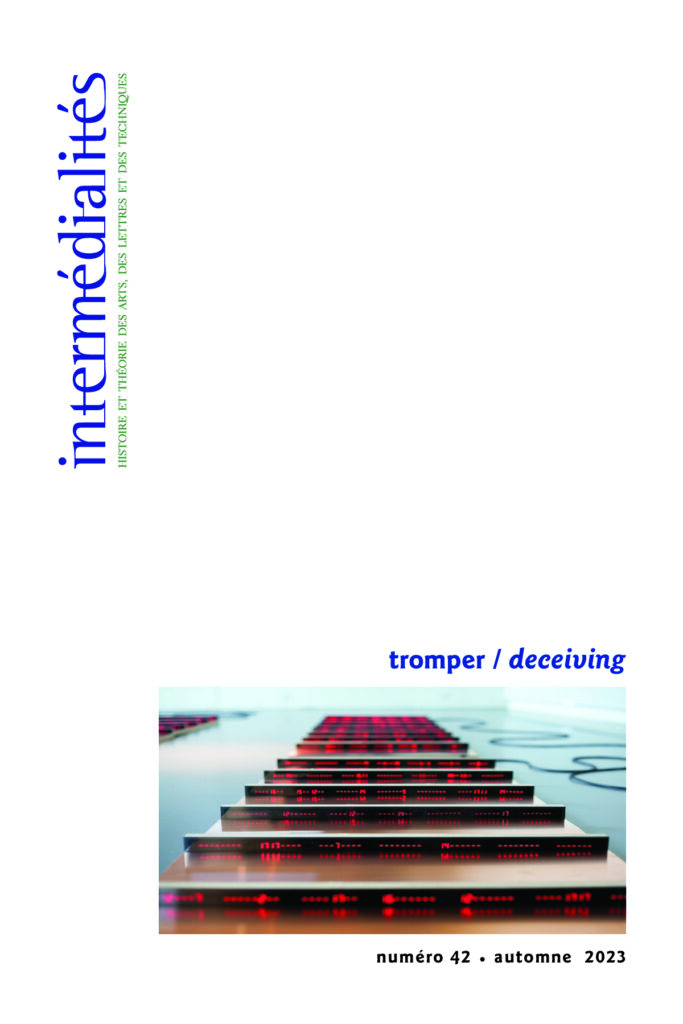Issue 42, Fall 2023
Sous la direction de Renée Bourassa et Jean-Marc Larrue
The current socio-digital ecosystem is characterized by a proliferation of powers of the false that considerably reduce our ability to detect manifestations of deception. From an intermedial perspective, these phenomena are not new as they stem from the ancient art of deception, (dis)simulation, or illusion, which manifests in various forms, both in artistic fictions (literature, performing arts, cinema) and in the social sphere, where they have taken unprecedented configurations within the current socio-digital ecosystem. Artistic practices, which we qualify as “deceptive arts,” have long played on the multiple springs of illusion, whether concealed or displayed, to entertain. However, the current situation reveals a major rupture: the system based on “regimes of authenticity” that provided shareable reference points is no longer operational. In an era of so-called “post-truth,” transformations of truth systems, authority, and legitimacy are occurring within contemporary mediation dynamics. Phenomena involving the art of deception often straddle the line between truth and falsehood, fiction and documentary. The objects of this issue are situated both in the domain of “deceptive arts,” these artistic practices – historical or more recent – where strategies of illusion, subterfuge, or deceit manifest for the pleasure of readers/viewers, and in the informational ecosystem, particularly around artificial intelligence where increasingly sophisticated devices operate in the art of simulation, multiplying the powers of the false. Both spheres evoke social imaginaries that we juxtapose to better expose their workings.

